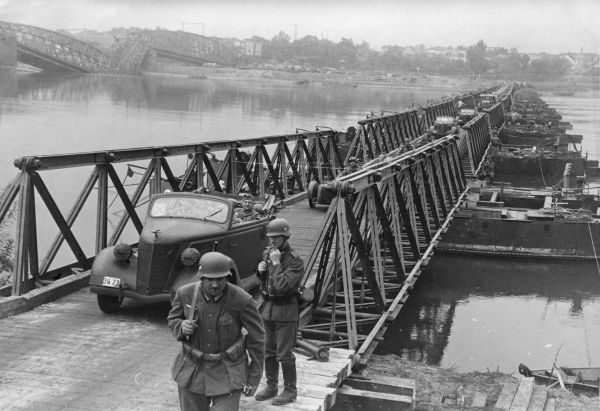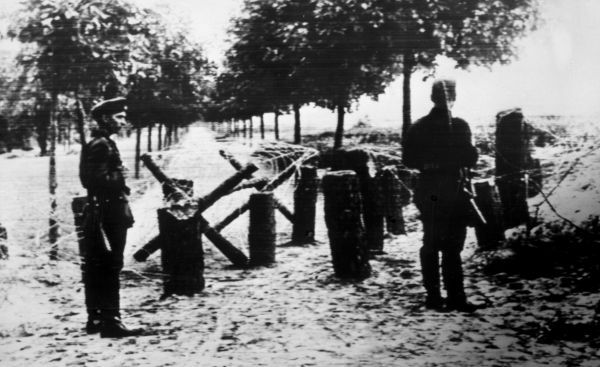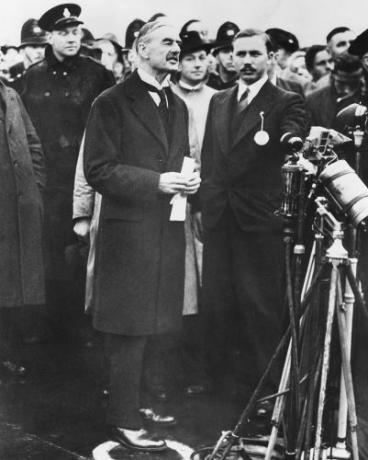THE Second World War it was the greatest conflict in human history and extended from 1939 to 1945. Its beginning occurred on the day September 1, 1939, When German troops crossed the Polish border and a German battleship opened fire on Danzig, a free city with Polish troops present. Two days after this event, the French and British declared war on Germany.
Accessalso: Learn about Nazi Germany's defeat in World War II
Background
The trigger that started World War II was the invasion of poland by the army of Germany. However, before we understand this event, it is important to have an overview of Europe in the late 1930s.
Germanic expansionism
In 1939, the situation in Europe was tense and the climate of war was evident. Germany was ruled by adolfhitler, leader of the Nazism, and the country defied the determinations of the Treaty of Versailles promoting its territorial expansion. Germanic expansionism was part of the Nazi ideology, and this element was represented in the lebensraum.
O lebensraum
consisted of the idea of living space, a notion existing in Nazism that Germany and the Germans had the right to build an empire that would shelter their population (adjectived, at the time, as arian). In this logic, the construction of this vital space would take place in places historically inhabited by the Aryans, and their survival would be at the expense of the exploitation of Slavic populations.Based on this, Hitler began to rearm the country, since territorial conquests would only be possible if it had enough military strength to frighten neighboring nations. Once Germany was militarily prepared, Hitler began territorial expansionism. In 1938, the country annexed Austria, and, in 1939, after a long negotiation process, it was annexed to Czechoslovakia.
Munich Conference
In 1938, the Nazis showed an interest in attach the Sudetenland, a region of Czechoslovakia with a large German population. The situation started a diplomatic crisis that led representatives of the French, British, Italians and Germans to meet in September 1938 at the Munich Conference.
At that meeting the question of Czechoslovakia was discussed, and the British and British decided to practice the well-known appeasement policy. Without the consent of that country's government, the French and British accepted Hitler's terms and gave him permission to annex him.
In exchange, nevillechamberlain, British Prime Minister, and ÉdouardDaladier, French prime minister, signed with Germany that this would be the last German territorial requirement and that the country would carry out actions that would contribute to the maintenance of peace on the European continent. Hitler agreed, but of course it was all a bluff. He already had his eyes turned to a new target: the Poland.
Also access: Understand how the French defeated the Germans in World War II
Rivalry with Poland

Poland emerged with the end of First World War, and part of the Polish territory was formed from the former territory that belonged to Germany before this conflict. After Hitler successfully annexed Austria and Czechoslovakia, he turned his attention to Poland, and throughout 1939 the German government's rhetoric against that country became increasingly aggressive.
The Nazi leader's goal was regain the territories that they had belonged to Germany and that were taken from it, with the defeat in the First War, to form Poland. In this sense, the highlights go to the PrussiaWestern, also known as HallPolish (a stretch of land that separated Germany from East Prussia), and Danzig (an old German city that had become free under the management of the League of Nations).

To ensure the success of his intentions, Hitler took a series of initiatives. First, as mentioned, it hardened the rhetoric against Poland; it hampered the negotiations that existed with the Polish, French and British governments; took the initiatives to prepare the German army; and, finally, it guaranteed the neutrality of the Soviets.
THE Soviet neutrality is an important chapter for the beginning of World War II. On August 23, 1939, the German and Soviet governments signed the Ribbentrop-Molotov Treaty or Non-Aggression Pact, in which the two nations would guarantee peace with each other for 10 years in case of war in Europe.
One secret clause and important of this treaty stipulated the division of Polish territory between Germans and Soviets. As a result, the way was virtually open for the Germans, although the French and British were still a major obstacle to Nazi goals. The Germans feared that the French and British would react to their aggression because Poland had a military alliance with these two nations.
This agreement stipulated that if Poland was attacked, the French and British would react against the aggressor of the Poles. The existing agreement was signed in March 1939, with the aim of preventing German aggression against Poland. In this agreement, the French guaranteed to attack the Siegfried Line and the British promised air strikes against the Germans, but only in case of aggression against the Poles.
Hitler had decided to attack the latter on the 26th, but the guarantee that the British and French would honor his agreement made him back off momentarily, although he did not believe the reaction of the allies of the Poland. In any case, German intentions towards Poland were clear and real.
The Germans had been informed, at their embassies in France, Poland and Great Britain, to advise other residents of those countries to leave them. Furthermore, German army troops began to be concentrated in East Prussia under the pretext of holding military celebrations, and eventually a German battleship anchored at Danzig. The Germans were closing in.
Also access: See the story of a gigantic cannon built by the Nazis in the war
Invasion of Poland
The last step was create a justification (historians call this the casusbell) to explain the invasion of Poland. On the 28th of August, Hitler's order determined that the invasion would take place on the 1st of September. The justification used by him and his followers was forged on the night of August 31st.
On that day there was a false flag operation against a German radio station located in Gleiwitz, near the Polish border. In this operation, men from the elite troop called SS (Schutzstaffel) dressed in Polish army uniforms and attacked this radio tower.
The Nazis then executed prisoners from the concentration camp from Sachenhausen, dressed them in Polish army uniforms and presented their bodies as proof that the Poles had attacked Germany. In the early hours of September 1, 1939, the battleship Schleswig-Holstein, anchored in Danzig, opened fire on the city, and German troops crossed the Polish border.
Altogether, the Germans mobilized approximately 1.5 million soldiers in the invasion of Poland and had 3600 armored and 1929war planes. The news of the German attack on Poland made the British and French start a great mobilization, and military defenses began to be mounted in both countries.

On September 3, the British and French reaction came. Both countries sent ultimatums to Germany, and since the Germans did not withdraw their troops from Poland, the UK declared war on Germans at 11 am,and the French, at 5 pm. The German reaction was one of disbelief, as not even Hitler expected the French and British to react. World War II had started.
By Daniel Neves
Graduated in History
Source: Brazil School - https://brasilescola.uol.com.br/guerras/inicio-segunda-guerra-mundial.htm
